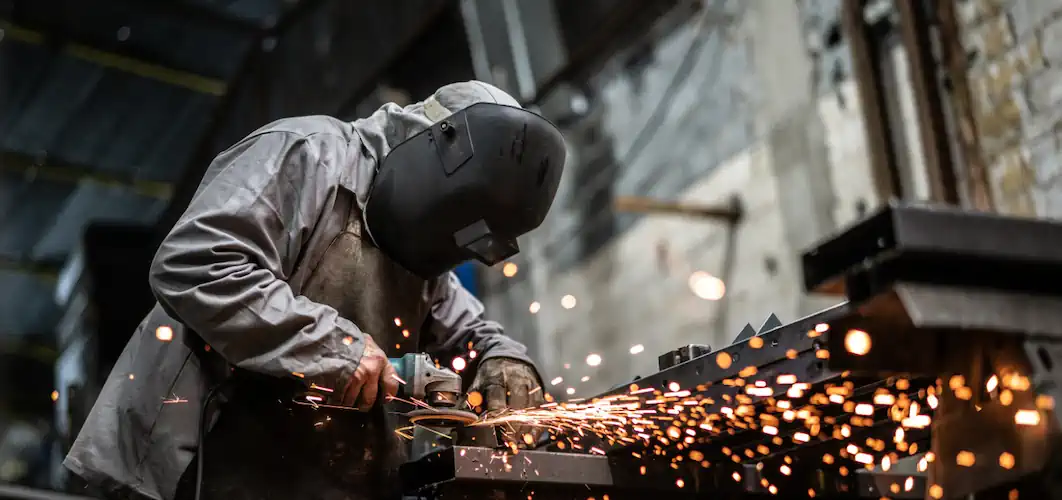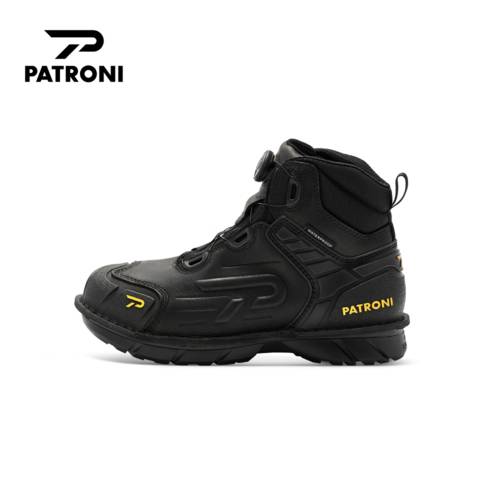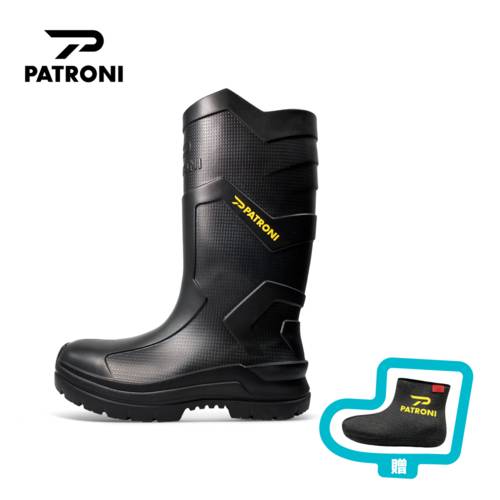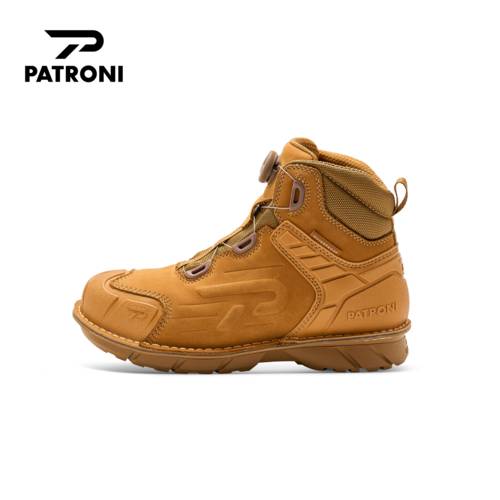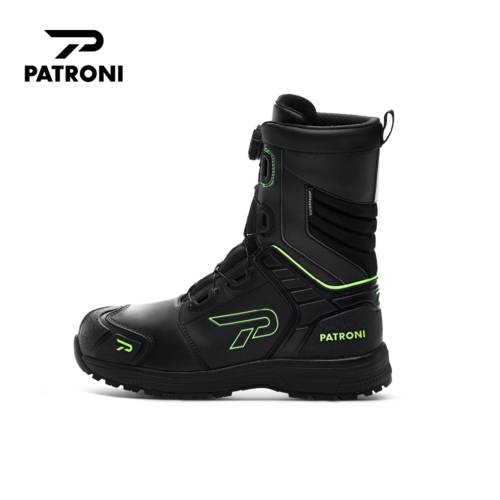How to Choose the Right Types of Safety Shoes for Your Industry
Strapping on the right pair of safety shoes is not only a matter of protection but also a step towards ensuring workplace safety. From construction sites to factories, different industries require specific safety footwear that can withstand the hazards unique to their environments. But with a multitude of options available, how can you find the perfect pair for your industry?
This article will help you choose the correct safety shoes for your footwear needs. Whether you're dealing with slippery surfaces, heavy machinery, or electrical hazards, we provide expert insights and recommendations on the key features to meet your industry's unique requirements for safety shoes.
Table of Contents
1. Why Wear Safety Shoes?
2. What are the Safety Shoe Norms?
3. What are the Types of Safety Shoes Appropriate for my Work Environment?
4. What are the Types of Safety Boots Appropriate for my Industry Needs?
5. Investing in the Right Safety Shoes for a Safer Workplace
Why Wear Safety Shoes?

According to the National Safety Council, a staggering number – over 50,000 – of work-related injuries involved foot trauma in 2022 alone. These injuries are not just a matter of minor discomfort; they can range from setbacks to severe accidents. This translates into lost workdays, decreased productivity, and significant financial implications for businesses.
Safety shoes are a critical component of any Personal Protective Equipment (PPE) program. They serve as the first line of defense for workers' feet, protecting them from a wide range of hazards encountered in various work environments.
What are the Safety Shoe Norms?
From basic toe protection to advanced features guarding against punctures and water ingress, all safety shoes must meet the EN ISO 20345 norms.
The EN ISO 20345 norm is the international benchmark for safety footwear. All safety shoes must meet these basic requirements, offering varying levels of protection depending on the category.

S1 Safety Rating
S1 safety shoes are ideal for lighter industrial environments, they prioritize comfort alongside essential foot protection.
They include a toe cap to shield against impact and compression injuries. While they lack features like penetration resistance, they offer basic safety in various work settings.
S1P Safety Rating
In addition to the features of S1 footwear, S1P includes a midsole for protection against punctures, adding an extra layer of defense against sharp objects on the ground. This makes them suitable for environments where such hazards are present, like construction sites or warehouses.
S2 Safety Rating
Suitable for damp environments and industries like food processing, S2 shoes add water resistance properties, making them suitable for environments where moisture or wet conditions are present.
S3 Safety Rating
Offering the most comprehensive protection from S2 features, S3 includes a penetration-resistant midsole, typically made of materials like steel or composite, guarding against sharp objects and punctures. They also feature increased slip resistance, ensuring safety in challenging work conditions such as construction sites or industrial settings.
S4 Safety Rating
S4 safety shoes protect against water ingress and absorption. They are made entirely of polymer or rubber materials, making them waterproof safety boots. However, these are soft-toe work boots and do not have penetration-resistant midsoles, so they are best suited for environments where these hazards are minimal.
S5 Safety Rating
S5 safety shoes offer the highest level of protection among safety footwears. In addition to features of S4 shoes, they include toe protection and penetration-resistant midsoles, making them suitable for the most hazardous work environments. With their robust construction and resistance to water, S5 shoes are ideal for construction, heavy industry, and outdoor work where safety is paramount.
Remember: When choosing safety shoes, prioritize the specific hazards present in your work environment. By understanding the EN ISO 20345 categories, you can ensure your employees have the right footwear for optimal protection and safety.
What are the Types Of Safety Shoes Appropriate for My Work Environment?
From steel-toed boots to slip-resistant shoes, safety footwear encompasses a variety of specialized designs aimed at protecting workers from various workplace hazards. Here are a few examples of suitable safety shoes you can wear in the industries:
Steel-Toe Shoes/Boots
Steel-toe boots, a staple in industrial settings, feature a reinforced safety toe cap to shield against heavy objects or compression injuries. Offering sturdy protection, these steel-toe work boots ensure safety in construction, manufacturing, and other hazardous environments, providing peace of mind and reducing the risk of foot-related accidents.
Composite-Toe Boots/Shoes
Composite-toe boots and shoes offer a modern alternative to steel-toe footwear, utilizing lightweight materials like carbon fiber, fiberglass, or Kevlar to provide protection. These shoes maintain safety standards while offering benefits such as reduced weight, non-conductivity, and resistance to temperature extremes, ideal for diverse work environments.
Electrical Hazard (EH) Rated Shoes
Electrical Hazard (EH) rated shoes are engineered to protect workers from electrical hazards by providing insulation against electric shock. Constructed with non-conductive materials and often featuring specialized outsoles, these shoes offer a crucial layer of safety for individuals working in environments with electrical equipment or exposed circuits, reducing the risk of injury.
Slip-Resistant Shoes
Slip-resistant shoes are designed with specialized outsoles that enhance traction and stability on slippery surfaces, reducing the risk of slips, trips, and falls. Ideal for workplaces prone to spills or wet conditions, such as kitchens, hospitals, or manufacturing floors, these shoes prioritize safety and confidence for workers navigating hazardous environments.
Chemical-Resistant Shoes
Chemical-resistant shoes are crafted with materials that withstand exposure to various chemicals, protecting workers from corrosive substances and hazardous liquids. These shoes feature specialized coatings or barrier materials to prevent absorption or penetration, ensuring safety in industries such as laboratories, chemical plants, and manufacturing facilities where contact with harmful chemicals is prevalent.
Puncture-Resistant Shoes
Puncture-resistant shoes are engineered with materials such as steel plates or composite layers in the soles to protect feet from sharp objects and puncture hazards. These shoes provide crucial defense against nails, glass shards, and other sharp debris, ensuring safety in construction, waste management, and industrial settings where foot injuries are common.

What are the Types Of Safety Boots Appropriate for My Industry Needs?
Construction Industry
Steel-toed boots shield workers from falling objects and heavy machinery. Puncture-resistant soles further protect against sharp objects like nails or glass. Ankle support prevents injuries from slips, trips, or falls on uneven terrain. For wet or muddy conditions, consider waterproof or water-resistant footwear. Regularly inspect and replace worn-out boots to maintain optimal protection.
Healthcare Industry
Healthcare professionals prioritize slip-resistant footwear for navigating potentially slick surfaces and preventing accidents. Closed-toe shoes protect against spills, sharp objects, and accidental impacts. Cushioned soles provide all-day comfort during long shifts, while easy-to-clean and sanitize designs maintain hygiene standards. Choose breathable materials to keep feet cool and dry, promoting overall comfort and foot health.
Manufacturing Industry
Steel-toed boots safeguard against heavy machinery, falling objects, and potential crushing injuries. Slip-resistant soles prevent slips and falls on slick factory floors. Shoes with electrical hazard protection mitigate the dangers of electric shocks in areas with live wires or equipment. Ensure proper fit and adequate support to minimize discomfort and enhance productivity.
Transportation Industry
Safety shoes ensure the well-being of workers facing risks associated with loading, unloading, and operating vehicles. Steel-toed boots offer protection against heavy equipment and falling objects, particularly in warehouses or freight yards. Slip-resistant soles are vital for drivers and warehouse personnel to maintain stability on slippery surfaces. Regularly inspect and replace safety shoes for optimal protection.
Oil & Gas Industry
Steel-toed boots protect against falling objects, crushing injuries, and punctures. Slip-resistant soles maintain traction on oily or wet surfaces. Chemical-resistant materials protect against corrosive substances common in the oil and gas industry. Regularly clean and inspect safety shoes for damage, replacing them as needed for continuous protection.
Remember, investing in the right safety boots for your industry is an investment in your workforce's well-being and a significant step towards creating a safer workplace.
Investing in the Right Safety Shoes for a Safer Workplace
Choosing the correct types of safety shoes for your industry is not just a regulatory requirement; it's an investment in your safety and well-being. With the myriad of hazards present in different work environments, selecting footwear that offers the appropriate level of protection is paramount.
By understanding the importance of safety shoes, the different types available, and the relevant safety ratings and certifications, you can make an informed decision that ensures safety without sacrificing comfort or productivity. Remember, the right pair of safety shoes can be the difference between a close call and a serious injury.




